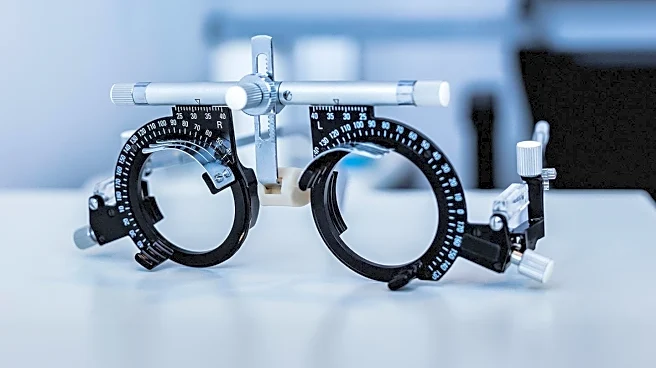What's Happening?
A recent study has highlighted the ongoing issue of inappropriate blood pressure (BP) cuff sizes, which can lead to inaccurate BP measurements. The study, conducted by Trivedi and colleagues, focused on the cuff size needs of Australian users based on mid-arm
circumferences. It found that a significant portion of the population requires either medium or large cuffs, with many home BP monitors not providing suitable sizes. The study revealed that 48.3% of adults would not fit the standard 22-32 cm cuff, and 3.8% would not fit the wide-range 22-42 cm cuff. This issue is exacerbated in individuals with obesity. The study also noted inconsistencies between the cuff sizes marketed by manufacturers and the recommendations of regulatory bodies, such as the American Heart Association. These discrepancies can lead to confusion among users and healthcare providers, as different manufacturers use varying terminologies for similar sizes.
Why It's Important?
The findings of this study are significant as they underscore a critical gap in the healthcare industry that affects the accuracy of BP measurements, a vital health indicator. Inaccurate BP readings can lead to misdiagnosis or inappropriate treatment of hypertension, potentially impacting patient outcomes. The study suggests that manufacturers need to offer a wider range of cuff sizes to accommodate different arm circumferences, particularly for individuals with obesity. This issue is not only prevalent in Australia but also in the U.S., where many BP monitors do not align with recommended size ranges. Addressing this gap could improve the accuracy of BP monitoring, leading to better management of hypertension and related health conditions.
What's Next?
The study calls for manufacturers and sellers to provide BP cuffs designed for specific arm circumferences rather than relying on generic size labels. This could involve revising product offerings to include more size options and standardizing terminology across the industry. Healthcare providers may also need to advocate for these changes to ensure patients have access to appropriately sized cuffs. Regulatory bodies might consider updating guidelines to reflect these needs, potentially influencing future product designs and market offerings.
Beyond the Headlines
The issue of inappropriate BP cuff sizes highlights broader challenges in medical device standardization and patient care. It raises questions about the role of regulatory oversight in ensuring that medical devices meet diverse patient needs. Additionally, it points to the importance of personalized healthcare solutions that consider individual patient characteristics, such as body size and shape, to improve health outcomes.















